Fisker CEO Henrik Fisker on Thursday night presented a vision of Fisker’s product plan, which might bring up to three additional new model lines by the end of 2025.
The product presentation was held hours before a financial update call with investors, in which the company was expected to elaborate on continued struggles ramping up production of its Ocean EV.
Fisker’s rollout is ambitious and includes three new innovative standalone EVs that appear to lack direct rivals in today’s vehicle market, including the much-anticipated sub-$30,000 Pear EV, an electric pickup starting under $45,000, and a grand-touring convertible that would serve as the brand’s technology and design flagship.
Fisker said that from the moment of the reveal all three of the vehicles—priced starting from $29,900 to $385,000—could be reserved. So here’s a quick outline of what they are.
Fisker PEAR revealed
Pear EV set for $29,900 start: A threat for Bolt EV?
Fisker says that the Pear EV project—for personal electric automotive revolution—started out looking at young peoples’ lifestyles in six cities around the world. It’s effectively a sustainable EV and connected mobility device together, and the result includes a lot of flexible space, storage, and access.
Cargo options in the Pear include a front boot, or froot, as well as a Houdini trunk with a roll-down rear tailgate that allows cargo access even when another vehicle is parked right up against the rear of the vehicle.
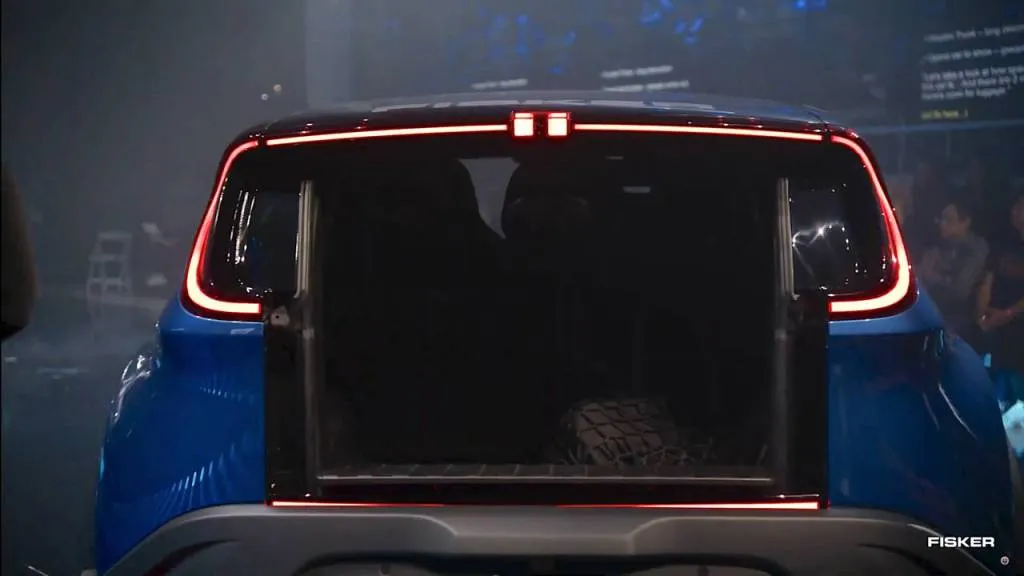
Fisker PEAR Houdini trunk
The compact Pear offers two rows of seats, but a bench seat in front for three will allow seating for up to six. The design aimed for a “glider-plane feeling” from the driver seat, with a panoramic view outward good for the city, explained Fisker, which is why it has a “super-curvy” windshield. With a lounge mode and available 17.1-inch screen, it’s also good place to watch movies.
The Pear will also mark the introduction of a new supercomputer being developed in-house, called Fisker Blade. Fisker said that the company plans to deliver over-the-air updates regularly—every month, and in some cases, every week.
The Pear will start at $29,900, Fisker again confirmed, noting that after federal incentives it will cost $22,400—a hint that Fisker is continuing to seek not only U.S. assembly in Ohio via Foxconn but American battery sourcing. That will likely put it in close competition with a reconstituted Chevy Bolt EV.
It’s intended as a high-volume model and built on a new platform called SMV1, for simple, light/versatile, and volume. Fisker noted he wants to get to one million made eventually, and claims a 35% parts reduction versus comparable vehicles.
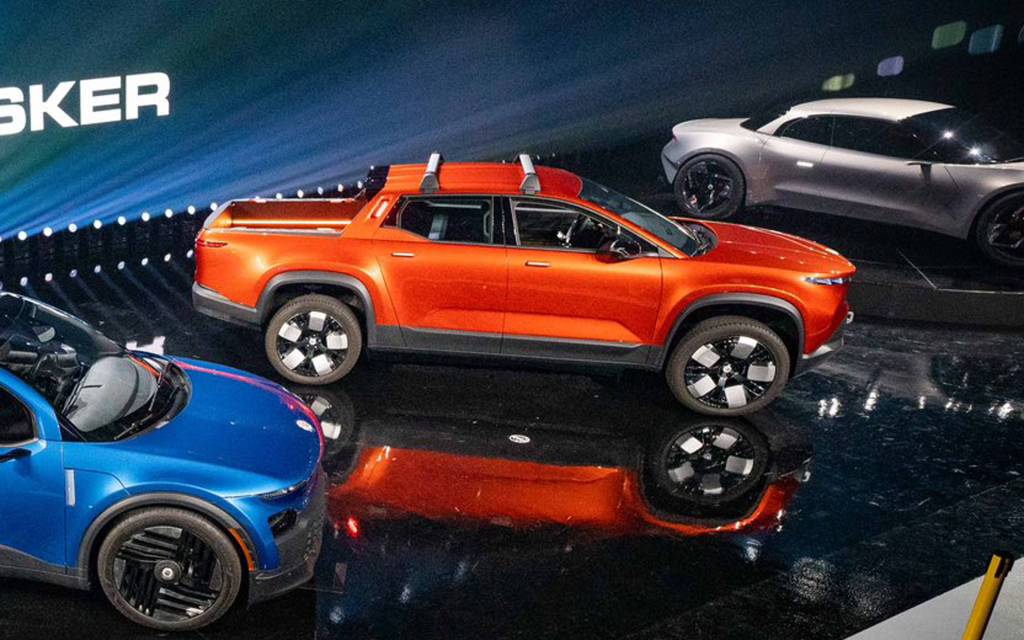
Fisker Alaska prototype
Fisker Alaska electric truck: Lightest, most sustainable?
Fisker also gave a complete look at the Alaska electric pickup that the company indicated in early 2021 was being fast-tracked for production.
The Alaska will be built on a stretched version of the Ocean platform, developed with the supplier and contract manufacturer Magna, and Fisker claims it to be both the world’s most sustainable pickup truck and the lightest electric pickup truck.
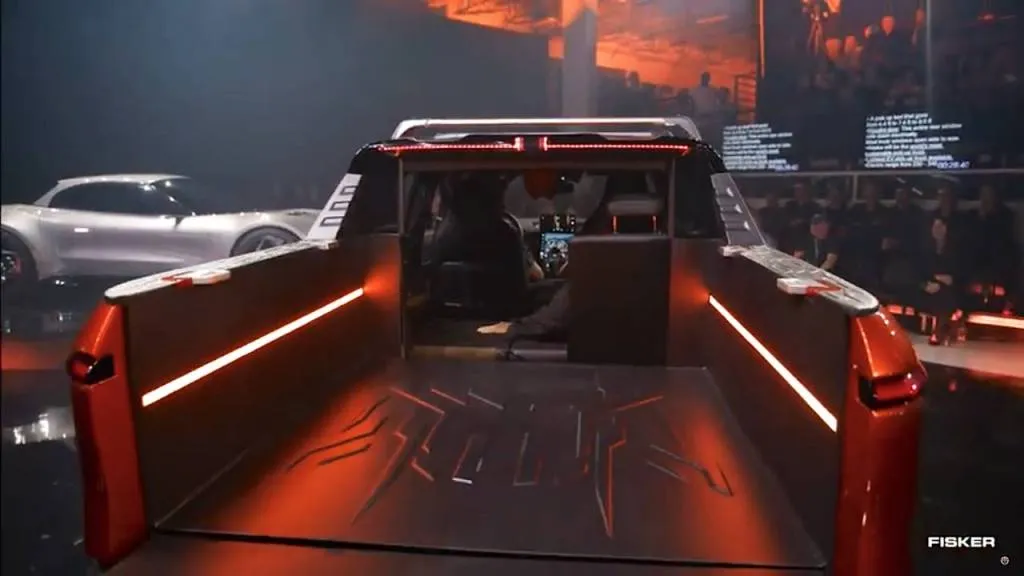
Fisker Alaska with Houdini pass-through
With a front bench seat, the Alaska will offer room for up to six. In back, there’s a “cowboy hat holder,” while California mode allows the rear window to be rolled down for airflow. But as Fisker demonstrated, the whole front portion of the bed rolls down like the Houdini trunk, allowing the 4.5-foot bed to expand to fit 7.5-foot-long items—like a full-size pickup. If you measure out to the tip of the tailgate, it’s 9.6 feet.
The Alaska will offer a 230-340-mile range, Fisker claims, and start at $45,400—or $37,900 after incentives, which again confirms North American production. It’s coming in the first quarter of 2025, the CEO said.
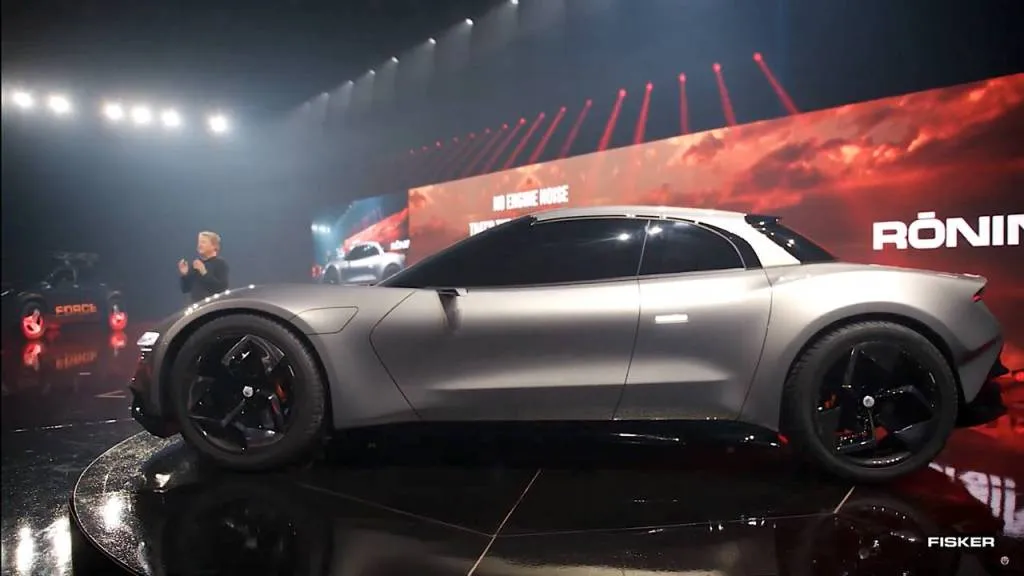
Fisker Ronin revealed
Fisker Ronin to “redefine luxury”
The third new model line Fisker revealed, the Ronin, was also teased before, but Henrik Fisker revealed much more about how it fits in.
Set to be the “technology carrier” for Fisker, the $385,000 Ronin will get a battery pack featuring cells integrated into the structure of the vehicle. The goal is a 600-mile range—in a luxury GT that someone might drive all the way from LA to Napa or Paris to Saint-Tropez without worrying about charging. Fisker claimed that the Ronin will provide the world’s longest range in a production EV—a claim that might potentially beat the Lucid Air’s 516 miles.
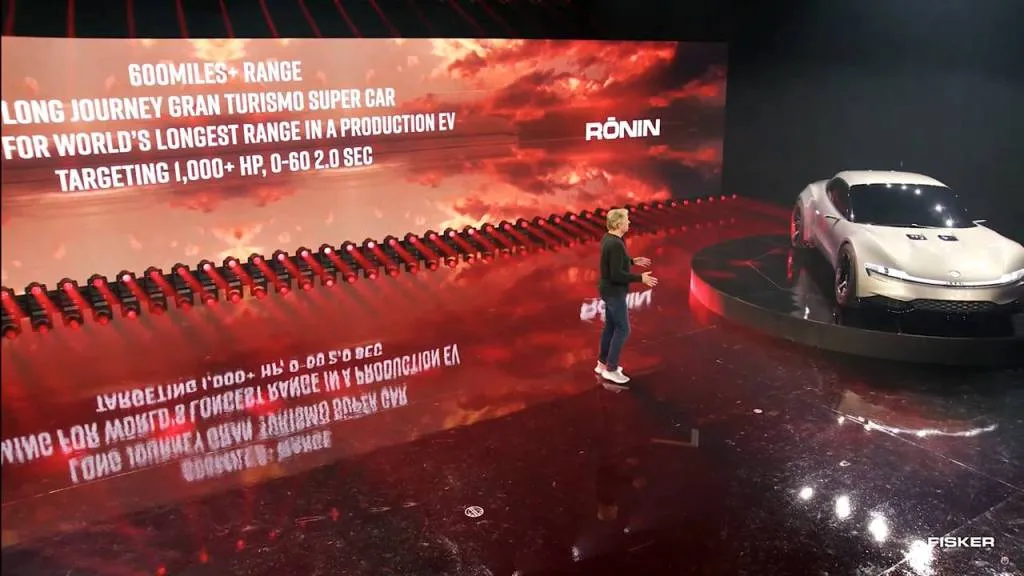
Fisker Ronin targets
The Ronin will “redefine luxury” according to Fisker, with a move beyond traditional interior materials. The low-slung grand-touring convertible is actually a four-door with butterfly doors, seating up to five. Fisker suggested it would be the easiest convertible to get into.
Due toward the end of 2025, according to Fisker, the Ronin promises supercar performance with a 0-60 mph acceleration time of around two seconds, more than 1,000 hp, a three-motor layout providing all-wheel drive, and active aero.
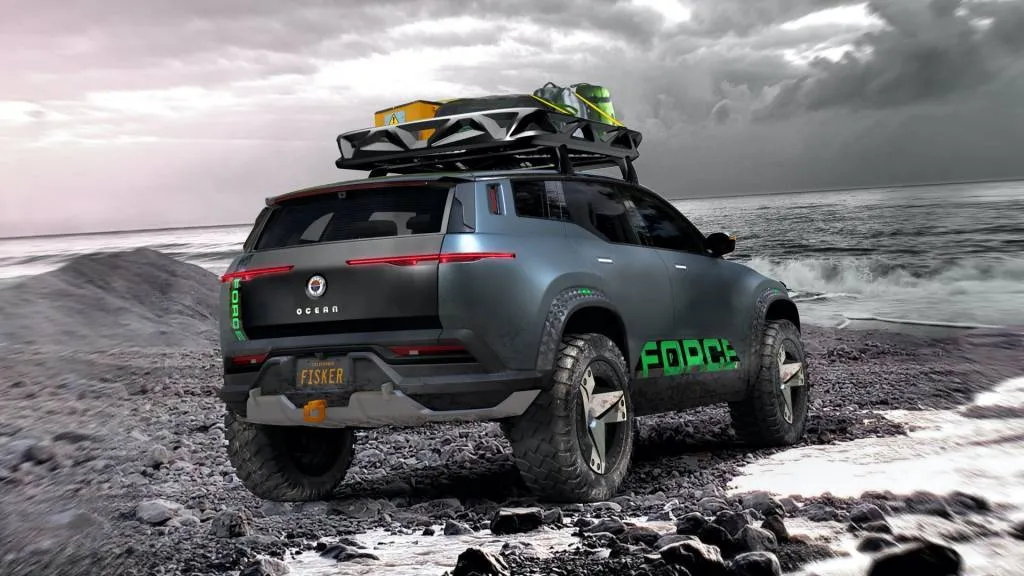
Fisker Ocean Force E
Off-road Ocean Force E update
Fisker mentioned a fourth model in the presentation: The Fisker Ocean Force E off-road version that brings more ground clearance, 33-inch off-road tires, specialized dampers, and much-improved off-road angles. It’s set to be available in the first quarter of 2024 either as a standalone model or as a kit.
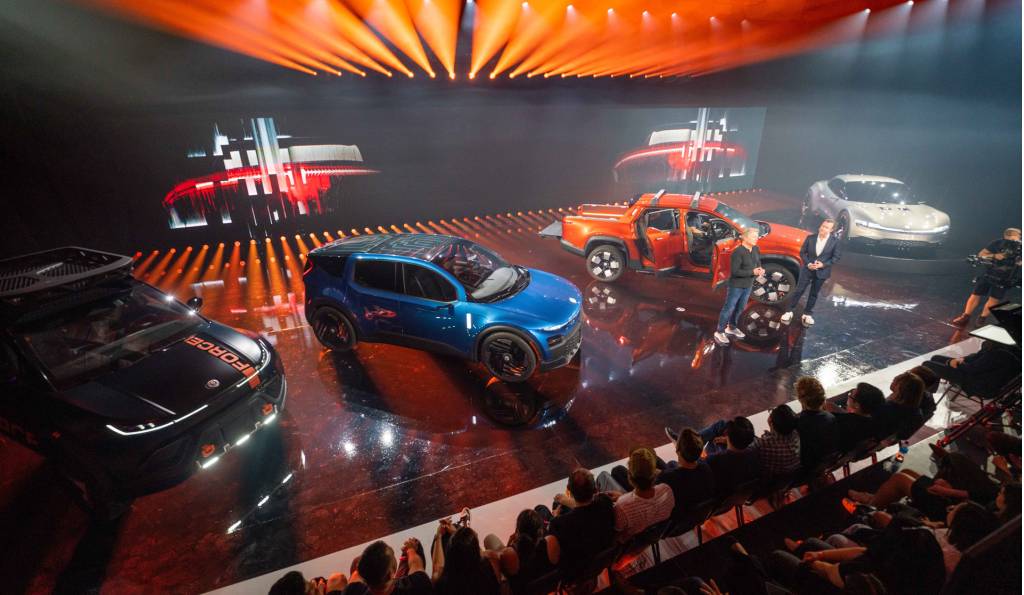
L to R: Fisker Ocean Force E, Pear, Alaska, and Ronin prototypes
Ambitious targets for one EV, let alone four
As Fisker noted in the presentation, Ocean deliveries are underway, and from its pivoting screen and California mode to the solar sky roof, the Ocean showcases some great ideas and an attractive price point.
Fisker’s timeline appeared far-fetched back in 2019 when it revealed the Ocean as due in 2021. But since locking in its production with Magna, Fisker has provided straightforward timelines and updates on production—and it kept to the timeline outlined at the time of its November production reveal.
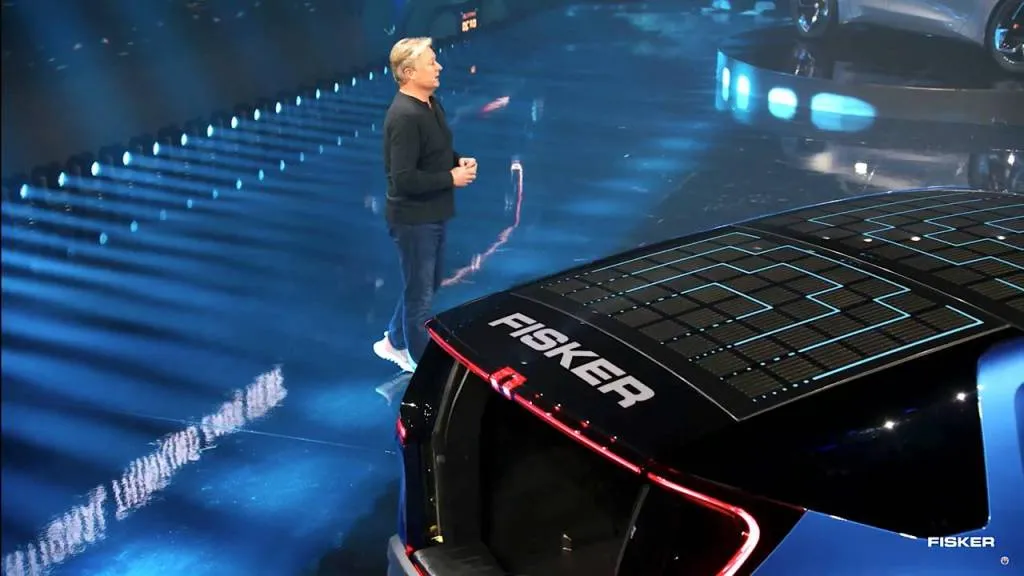
Fisker CEO Henrik Fisker with Ocean, solar roof
What remains yet to be detailed is how all of these products fit in with Fisker’s asset-light approach, which means the company itself doesn’t own a manufacturing footprint. It also remains to be seen whether Fisker will be able to coordinate not just the production of multiple innovative products executed by multiple companies and plants, but whether it will be able to support those products when issues arise.
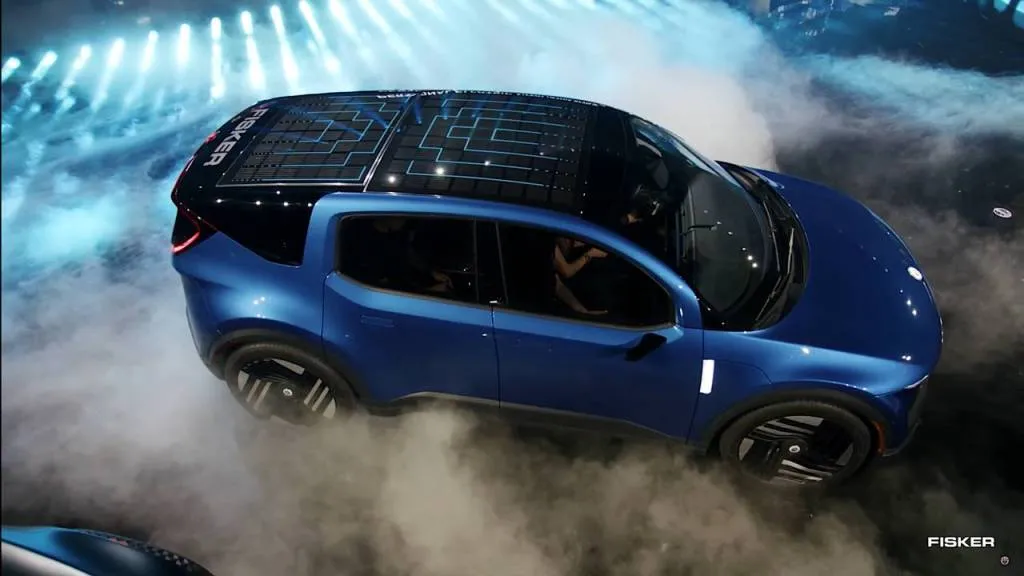
Thanks for this enlightening blog. It was extremely informative and offered valuable knowledge. If you’re looking to learn more about how to boost your real estate business online, be sure to check out https://www.elevenviral.com for additional insights.
This was a really insightful post, thank you for sharing!
buy lasuna cheap – purchase diarex generic buy himcolin pills
besifloxacin sale – buy generic carbocysteine online buy sildamax sale
neurontin over the counter – buy generic ibuprofen buy cheap azulfidine
probenecid sale – buy monograph 600mg tegretol pills
buy celecoxib 100mg sale – purchase indocin pills indocin canada
colospa 135 mg usa – brand pletal order generic cilostazol 100mg
voltaren us – aspirin usa aspirin cheap
rumalaya cheap – oral endep amitriptyline uk
order ozobax pill – buy baclofen 25mg sale purchase piroxicam
order meloxicam 15mg online cheap – meloxicam 7.5mg oral cheap ketorolac
order cyproheptadine 4mg pills – where can i buy tizanidine how to get zanaflex without a prescription
cefdinir canada – cefdinir 300mg canada buy clindamycin online
order isotretinoin 10mg pills – order deltasone 40mg sale buy deltasone 10mg generic
cost prednisone 20mg – oral prednisone 40mg buy generic elimite over the counter
order acticin online cheap – permethrin online tretinoin ca
buy betnovate 20 gm generic – buy generic differin buy cheap monobenzone
order flagyl 200mg pills – purchase metronidazole without prescription buy cenforce 50mg sale
augmentin 625mg brand – buy augmentin 375mg without prescription synthroid 100mcg price
cleocin online – order indomethacin 75mg for sale indocin online order
buy cozaar without a prescription – buy losartan paypal order keflex online
buy crotamiton no prescription – purchase aczone without prescription buy cheap aczone
provigil 100mg drug – cost promethazine 25mg order meloset 3 mg generic
bupropion 150 mg for sale – purchase xenical pill buy shuddha guggulu generic
capecitabine 500mg ca – mefenamic acid oral brand danazol 100 mg
prometrium 100mg usa – order ponstel without prescription how to get clomiphene without a prescription
fosamax drug – buy generic pilex buy provera 10mg pills
brand norethindrone – order yasmin cheap yasmin sale
purchase yasmin sale – buy generic ginette 35 buy arimidex generic
гѓ—гѓ¬гѓ‰гѓ‹гѓі – 5mg – г‚ўгѓўг‚г‚·г‚·гѓЄгѓійЂљиІ©гЃЉгЃ™гЃ™г‚Ѓ г‚ўг‚ёг‚№гѓгѓћг‚¤г‚·гѓігЃ®йЈІгЃїж–№гЃЁеЉ№жћњ